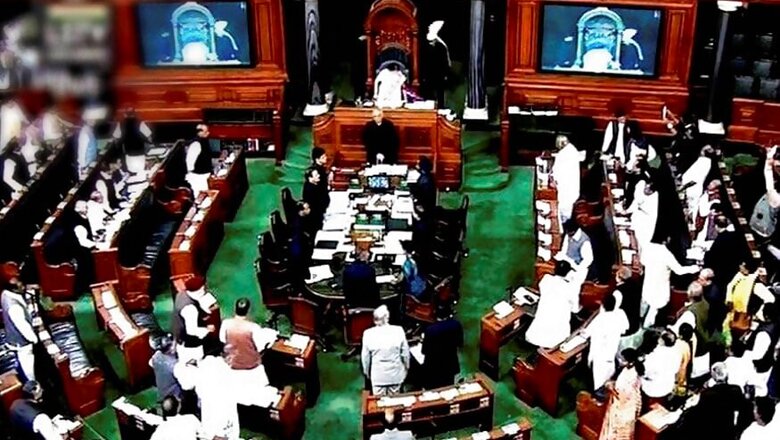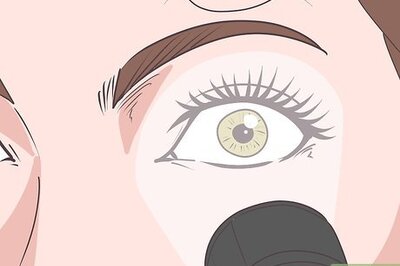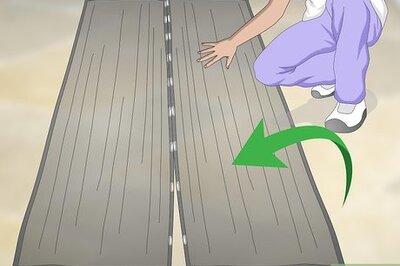
views
New Delhi: There were 8,000-plus candidates that contested this Lok Sabha election, of which around 700-plus were women. Seventy eight of these women have been elected to the Parliament -- a slight increase from the 2014 polls where 62 women parliamentarians were elected.
An analysis by News18 shows that Uttar Pradesh and West Bengal have elected the highest number of women MPs with 11 candidates each. These states include prominent women leaders like Bahujan Samaj Party’s chief Mayawati and West Bengal’s chief minister Mamata Banerjee. UP and Bengal are followed by eight women MPs in Maharashtra, seven in Odisha and six in Gujarat.
Out of the total 29 states, women MPs were elected from 22, leaving seven states with no female representation in the Parliament. The seven states are Arunachal Pradesh, Himachal Pradesh, Jammu & Kashmir, Manipur, Mizoram, Nagaland and Sikkim.
In terms of political parties, the BJP has the maximum number of winning women MPs — 41 among all political parties. This partly has to do with the fact that the party won with a clear majority on its own by securing 303 seats.
A data analysis of the political parties shows that Mamata Banerjee’s All India Trinamool Congress (AITC) includes nine winning women members and they constitute 40 percent of women— the second highest number among all political parties.
Among the independents candidates, only two secured seats in the Parliament.
Women Elected From States
This election, women candidates from 22 states and one union territory have been elected. According to the last census, 48 percent of India’s population is female, which makes the percentage of women representatives -- 14.36 percent -- in the Parliament abysmally low.
Uttar Pradesh and West Bengal each had 11 women elected—the highest number among all states. In Uttar Pradesh, eight women were from the BJP and one each from the Congress (INC), BSP and Apna Dal. In the Rampur constituency in UP, BJP’s Jaya Prada lost to Azam Khan from SP by a margin of 1,10,388 votes. Khan had landed himself in controversy after making sexist remarks about Jaya Prada during the election campaign. In UP’s Amethi, Smriti Irani defeated Rahul Gandhi by a huge margin.
Banerjee’s TMC had 40 percent women representation and nine of them have been elected to the Parliament. Apart from these, two BJP women candidates were also elected from West Bengal.
Maharashtra came in third, with five women candidates from the BJP elected from the state, and one each from the Congress, Shiv Sena and an independent.
Odisha elected seven women candidates, five of whom were from the Biju Janata Dal, a state political party. The other two candidates are members of the BJP.
The six women MPs elected from Gujarat are all from the BJP.
States that elected four women MPs each are Andhra Pradesh and Madhya Pradesh. In the former, all four women are from the YSR Congress party. The four women parliamentarians from Madhya Pradesh are from the BJP.
Three women candidates each were elected from Bihar, Chhattisgarh, Rajasthan and Tamil Nadu. In Bihar, one each was elected from BJP, JD(U) and LJP. In Chattisgarh, two candidates are from the BJP and one from the Congress. All three women from Rajasthan are from the BJP, while Tamil Nadu has two from DMK and one from Congress. One of the most prominent figures from Tamil Nadu politics missing in this election was late J Jayalalithaa, a longstanding chief minister of the state who passed away in 2016.
Jharkhand, Karnataka and Punjab also elected two women MPs each. The candidates from Jharkhand are one each from BJP and Congress. In Karnataka, an independent woman candidate and a Congress candidate won. In Punjab, one from Akali Dal and one from the Congress won.
Five states and a UT, namely Uttarakhand, Telangana, Kerala, Haryana, Delhi and Chandigarh elected one woman MP each. Here, all women candidates are from the BJP with the exception of one from TRS in Telangana.
From Alathur Lok Sabha constituency in Kerala, Ramya Haridas is the second Dalit female MP from the state. Kerala follows its 2014 trend of just one woman MP being elected from the state.
Of the eight states in the northeast constituting a total of 25 seats, three women were elected in 2019, which is one more than the last general elections. Of these, two are members of the BJP and one is from the National People’s Party (NPP). From the ruling NPP in Meghalaya, Agatha Sangma won from the Tura parliamentary seat by a margin of 64,030 votes. She comes to power after defeating former chief minister of the state, Mukul Sangma, of the Congress.
On a bright note, for the first time since independence, Mizoram and Arunachal Pradesh each had a woman contest in the 2019 Lok Sabha elections. The two states, which have more female voters than male, account for three out of 543 seats in the parliament.
In 2014, the number of women elected in these eight states were just two, making it eight percent of the total 25 seats.
Past Polls
According to the United Nations, the percentage of women in Parliament has doubled globally in the last 20 years, but this only translates into 23 per cent of women in Parliament today.
Among the top 10 candidates to secure highest number of votes in 2014 was BJP’s Munde Pritam from Beed constituency in Maharashtra. Pritam got the highest votes of 9,22,416 in a by-election.
Sumitra Mahajan, was in the fourth on the list. While she did not contest the 2019 elections, Mahajan has been the longest-serving woman member who represented the Indore parliamentary constituency of Madhya Pradesh since 1989.
During the 2009 Lok Sabha elections, 556 (7 percent) female candidates out of the total 8,070 contested. The number of women contesting saw a slight increased to 668 (8 percent) out of 8,251 total candidates in the 2014 elections.
The 16th Lok Sabha had 62 (11 percent) female MPs out 543 MPs. To put it in perspective, almost nine out of the 10 parliamentarians were men. This number has increased to 66 now after four female candidates won during the by-polls that happened between 2014 and April 2019.
In 2014 Lok Sabha elections, TMC had the highest percentage of women candidates. It fielded 13 female candidates, followed by Rashtriya Janata Dal (RJD), which fielded 5. The Congress fielded 60 female candidates among the 464 seats it fought, constituting a mere 12.9 percent of its total candidates. The BJP, on the other hand, fielded 38 female candidates among the 428 seats it fought on, making it 8.9 percent.
In the last 56 years, India’s Lok Sabha has not been able to double its tally of elected women representatives. In 1962, Lok Sabha had 6 per cent women in Parliament. In 2014, the number was just 11 per cent.
Still a Long Way to Go
While 2019 Lok Sabha elections witnessed the highest number of women candidates securing seats in the lower house of the Parliament, equal representation of women in Parliament still has a long way to go. A 2018 study by the United Nations University World Institute for Development Economics Research estimates that “women legislators in India raise luminosity growth in their constituencies by about 15 percentage points per annum more than male legislators.”
This study, titled ‘Women legislators and economic performance’, examines data for 4,265 state assembly constituencies between 1992 and 2012. During this period the country witnessed a strong economic growth. Also, the share of state Assembly seats won by women increased from around 4.5 percent to nearly eight percent, the study states.
Worldwide figures on the representation of women in leadership and their political participation in the Parliament is appallingly low. As of November 2018, 24 per cent of all women national parliamentarians across the world were women, a 13 per cent increase from 1995 (11.3 per cent). As of January 2019, 11 women were serving as Heads of State and 10 as Head of Government, according to the United Nations.
Amongst countries in the South Asian Association for Regional Cooperation (SAARC), India has 12.6 per cent of elected women representatives in their national parliaments, only ahead of Sri Lanka (5.3%) and Maldives (4.7%), according to January 2019 data compiled by the Inter-Parliamentary Union (IPU), a multilateral agency.




















Comments
0 comment